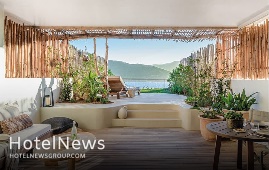
Welcome to our annual World’s Best Luxury Hotel Brands report. This is not just another World’s Best list. LTI – Luxury Travel Intelligence – has taken the past 12 months to apply the perfect assessment process: a rigorously defined algorithm that measures the performance and values of luxury hotel brands. This year, our algorithm has 131 touch points relevant to the luxury hotel sector. Each has its own weighted score value with a total maximum accumulative score of 4736. The touchpoints relate to overall brand performance, rather than the performance of individual properties. It is all about a brand’s ability to deliver: its passion, commitment, ethos and values, as well as the quality of its management and staff. Continuing investment and how well it is executed is also a major factor, particularly regarding new properties and the refurbishment of existing ones. This year’s results are reflected as percentages, with last year’s positions in brackets. 1. Six Senses 83.3% (1) 2. Mandarin Oriental 82.6% (5) 3. Auberge 81.8% (3) 4. Aman 81.4% (2) 5. Belmond 79.9% (4) 6. One&Only 77.0% (6) 7. Oetker Collection 75.7% New Entry 8. Four Seasons 74.1% (8) 9. Rosewood 73.5% (7) 10. Raffles 72.7% New Entry 11. Viceroy 72.2% New Entry 12. COMO 71.0% (10) Other brands that rated sufficiently to be monitored throughout the year are (in alphabetical order) Alila, Anantara, Banyan Tree, Dorchester Collection, Firmdale, Jumeirah, Leela, Oberoi, Park Hyatt, Peninsula, Ritz Carlton, Rocco Forte, Shangri-La, Soho House, St. Regis, Taj, The Luxury Collection. Brands that currently have less than ten properties (our minimum requirement) but rate highly when applying our algorithm are (in alphabetical order) Airelles, Althoff Collection, Bulgari, Capella, Cheval Blanc, Maybourne, Montage, Nikki Beach, Pendry, Soneva. About The World’s Best Luxury Brands ReportNo other organisation connects with the global luxury hotel industry as LTI does. Our researchers engage with everyone from CEOs of the brands we have rated to thousands of managements, staff and guests. This is all part of the process for creating our destination led reports for our members (affluent, discerning travellers) but it also allows us to utilise our findings to create this unique report. Every year the process starts again – the results from previous years have no bearing on the following year. This does inevitably lead to volatility in each year’s results (such as this year), but this is a dynamic sector and we want to reflect what is really happening out there. Six Senses: Worlds Best Luxury Hotel BrandWe continue to be very impressed with Six Senses. It has an authentic blend of wellness, sustainability, warm hospitality and crafted guested experiences. Also, its leadership is exemplary. The recent addition of Neil Palmer as Chief Operations Officer will bring boundless experience, energy and further integrity to the brand. New EntriesWe have been tracking Oetker Collection for several years while they have been building an exceptional portfolio of globally renowned hotels. We have been particularly impressed with the meticulously rebuilt of The Eden Rock in St Barths and their creation of The Woodward, a 26 room all-suite hotel on the shores of Lake Geneva, which opened in September. Raffles, with a new CEO at the helm, has been quietly creating a raft of impressive new properties across the globe. Viceroy has also shown great courage and commitment to building a global modern luxury hotel brand offering intuitive service, authentic experiences and provocative design. Covid-19 Impact Our algorithm has been suitably adjusted to accommodate the multitude of Covid- related challenges that luxury hotel operators have faced during 2020 and 2021. This also accommodates how brands are responding to a significant shift in Covid- driven demands from the luxury traveller.
Create: Oct 19, 2021 Edit: Oct 19, 2021 International News
Qeshm Island recorded over 2.8 million visitors during the first half of the current Iranian calendar year (started March 21). The official data provided by Qeshm’s Department of Ports and Maritime marked a 20 percent increase in tourism flow compared to the same period year on year, IRNA reported. “In the first half of this year, 2,820,229 people traveled to Qeshm, which shows a 20% growth compared to the same period the last year,” Ali Ashtari, who presides over the department, said on Saturday. The island is a heaven for eco-tourists as it embraces wide-ranging attractions such as the Hara marine forests and about 60 villages dotted mostly across its rocky coastlines. It also features geologically eye-catching canyons, hills, caves, and valleys, most of which are protected as part of the UNESCO-tagged Qeshm Island Geopark, itself a haven for nature-lovers. Many travelers to Qeshm believe that the Stars Valley or Valley of Stars is a “MUST SEE”. It is home to bizarre-shaped gorges, tall pillars, canyon-like paths, hollowed-out spaces as well as the smooth and round stones, which have been formed by the wind and rain eroding the soil, rocks, and stones. Locals believe that a star once fell on this area thereby creating the rocky shapes that make it seem as if from another planet.
Create: Oct 19, 2021 Edit: Oct 19, 2021 Regional News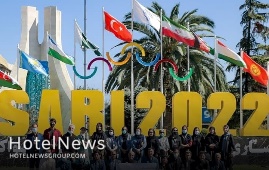
The northern province of Mazandaran has considerable potential to attract vacationers from around the world and become an international tourist destination. Having a wide range of capacities and potentials, Mazandaran, which is a top destination for domestic travelers, can be turned into a destination for foreign travelers as well through careful planning, the provincial tourism chief has announced. Given that the provincial capital of Sari has been selected to be the cultural capital of the Economic Cooperation Organization (ECO) in 2022, there is the possibility of promoting it as a tourist destination internationally, Seifollah Farzaneh said on Sunday. Boosting the province’s tourism infrastructure, however, requires more funding, the official added. Earlier this month, local tourism officials announced that 214 tourism-related projects were underway in the lush green province estimated to generate more than 14,000 jobs upon their completion. Some 186 trillion rials ($4.4 billion at the official exchange rate of 42,000 rials per dollar) have been invested in the ongoing projects so far. The developments will also add over 15,000 beds to the hospitality sector of the province. In Mazandaran province, one of Iran’s most popular domestic vacation spots, serious damage was sustained from the coronavirus outbreak, and tourism facilities in the province went through a significant economic recession. However, the Iranian government has paid 343 billion rials ($8.1 million) in loans to the tourism businesses affected by the pandemic in the province so far. Last November, Mehran Hassani, the deputy provincial tourism chief announced that the province’s tourism industry has taken six trillion rials (about $143 million) hit from the impact of coronavirus (COVID-19) over the previous months. He also noted that there are 4,000 active tourism units across the province, generating jobs for about 16,000 people directly. Sandwiched between the towering Alborz mountain range and the Caspian Sea, Mazandaran has a rich yet turbulent history. An early civilization flourished at the beginning of the first millennium BC in Mazandaran (Tabarestan). Its insecure eastern and southeastern borders were crossed by Mongol invaders in the 13th and 14th centuries. Cossacks attacked the region in 1668 but were repulsed. It was ceded to the Russian Empire by a treaty in 1723, but the Russians were never secure in their occupation. The area was restored to Iran under the Qajar dynasty. The northern section of the region consists of lowland alongside the Caspian and upland along the northern slopes of the Alborz Mountains. Marshy backlands dominate the coastal plain, and extensive gravel fans fringe the mountains. The climate is permanently subtropical and humid, with very hot summers.
Create: Oct 19, 2021 Edit: Oct 19, 2021 Regional News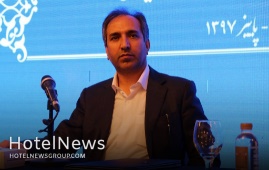
Iranian hotels are ready to receive foreign tourists as the issuance of tourist visas and the flow of foreign tourists from land and air borders will be resumed this month. Ninety percent of the hotel staff have been vaccinated against the coronavirus so far, so the hotels are ready to welcome foreign tourists, observing strict health protocols, the head of the Association of Iranian Hoteliers has announced. To ease the travel process, individual foreign tourists could confirm the reservations of accommodation centers at the border, CHTN quoted Jamshid Hamzehzadeh as saying on Monday. The destinations of foreign tourists in Iran are to specific cities such as Mashhad, Qom, Tabriz, Shiraz, Yazd, and Isfahan, and to return to the figure of over eight million incoming tourists before the outbreak of the coronavirus, serious planning is required, the official added. Iraqi tourists will flood the country once the borders open, but attracting tourists from Europe will require some time, he noted. Foreign advertising in foreign media and press, on the internet, and through well-known international bloggers should also be planned and taken seriously, he mentioned. Earlier this month, the official noted that Iranian hotels have lost 202 trillion rials (some $4.8 billion at the official exchange rate of 42,000 rials per dollar) of potential revenues due to the COVID-19 pandemic. Two-thirds of the hotel staff have lost their jobs as well, he added. Back in September, Hamzehzadeh announced that all employees of accommodation centers across Iran are scheduled to be vaccinated against the coronavirus. “To vaccinate staffs of all accommodation centers, including eco-lodges, apartment hotels, and guest houses, as well as hotels, more coordination with the Ministry of Health is needed,” he added. Back in July, ISNA reported that the tourism industry of the country has suffered a loss of some 320 trillion rials ($7.6 billion at the official exchange rate of 42,000 rials per dollar) since the outbreak of the coronavirus pandemic. The pandemic has also ruined more than 44,000 jobs in a once budding travel sector of the country, the report added. Experts believe accommodation centers suffered the most as a result of the outbreak of the coronavirus in Iran and its subsequent unemployment and financial losses. Iran plans to resume issuing tourist visas Back in September, Cultural Heritage, Tourism and Handicrafts Minister Ezzatollah Zarghami announced that by the order of President Ebrahim Raisi the issuance of tourist visas and the flow of foreign tourists from land and air borders will be resumed from the month of Aban (Oct. 23 – Nov. 21) following 19 months of suspension. Months of steep recession has taken its toll. Many travel insiders, hoteliers, and tour operators have faced big dilemmas such as bankruptcy, unemployment, debts, and the prospects of not being competitive on the international level. They now have good grounds of hope as Zarghami announced on September 19 that the country plans to lift visa restrictions to help the severely hit tourism industry. Meanwhile, the number of people testing positive for COVID-19 has continued to fall in the Islamic Republic, curbing a stubborn fifth wave of the pandemic, which has seen daily mortalities of up to 700 in recent weeks. As of September 22, the figure dropped to below 300 as the government has devoted a great deal of effort to vaccinate citizens against the nasty virus. Some experts believe Iran is still somehow “unknown” for many potential travelers due to Western “media war”. Several estimates have been released so far on the extent of the tourism-related losses incurred by the pandemic. Only months into the outbreak, Zarghami’s predecessor, Ali Asghar Mounesan, lamented that the number of foreign travelers to Iran was drastically plunged due to the pandemic. “Tourism of the country was growing before the corona [outbreak], its revenues reached $11.7 billion in 2019, which accounted for 2.8% of GDP, nearing the average share of tourism in the world GDP, which was 3.2 percent,” Mounesan said. He added 8.7 million foreign nationals visited Iran during the [Iranian] year (1398), adding that Iran was ranked as the second fastest-growing country in tourism based on data compiled by the World Tourism Organization. Iran is potentially a booming destination for travelers seeking cultural attractions, breathtaking sceneries, and numerous UNESCO-registered sites. Under the 2025 Tourism Vision Plan, Iran aims to increase the number of tourist arrivals from 4.8 million in 2014 to 20 million in 2025.
Create: Oct 18, 2021 Edit: Oct 19, 2021 Regional News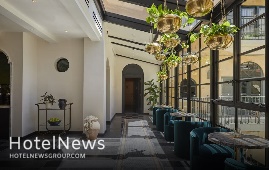
In partnership with Ferrado, el PRADO Hotel announces the grand opening of its new Spanish-inspired luxury property in the heart of downtown Palo Alto. The reflagged independent hotel and vibrant destination, formerly known as the Garden Court Hotel, features 62 guestrooms, ample indoor and outdoor meeting spaces, and delicious seasonal food and beverage offerings in inviting new spaces. The renovation was overseen by award-winning hotel design firm, NICOLEHOLLIS, and structured with the discerning business and leisure traveler in mind. In partnership with Ferrado, el PRADO Hotel announces the grand opening of its new Spanish-inspired luxury property in the heart of downtown Palo Alto. The reflagged independent hotel and vibrant destination, formerly known as the Garden Court Hotel, features 62 guestrooms, ample indoor and outdoor meeting spaces, and delicious seasonal food and beverage offerings in inviting new spaces. The renovation was overseen by award-winning hotel design firm, NICOLEHOLLIS, and structured with the discerning business and leisure traveler in mind. Upon opening, the hotel debuts a two-floor glass solarium outfitted with cozy seating adjacent to the Breakfast Cafe, and perfect for enjoying a morning cup of coffee or settling into a workday; a second-floor bar serving Spanish-inspired bites and signature cocktails; The Library, featuring a boardroom table, separate lounge area with plush couches, and full technology capabilities for business conferencing; and a back courtyard area fit with a large fireplace and outdoor lounge furniture adjacent to lobby-level meeting rooms for breakout sessions. Appealing to the new-age business traveler, el PRADO offers a variety of amenities to make the workday away from home or the office a seamless and enjoyable experience. Its brand new C-Suite Retreat package includes full valet parking service to welcome guests upon arrival and ensure a smooth check-out process, a wholesome breakfast from the Breakfast Cafe, and a complimentary signature low ABV cocktail made with fresh, botanical ingredients. The package also includes high-speed Wi-Fi, an Executive Concierge for technology set-up and food and beverage orders, and late check-out to coincide with a workday or late afternoon meeting schedule. el PRADO is certified as a Clean & Safe Hotel within the California Hotel and Lodging Association — implementing precautionary measures provided by the association’s Clean & Safe Guidelines, including contactless check-in and robust cleaning measures ensuring the overall health and wellbeing for guests and staff.
Create: Oct 16, 2021 Edit: Oct 16, 2021 International News
Courtyard by Marriott will return to the Dupont Circle neighborhood in Washington, D.C., boasting a meticulous redesign and ready to host guests beginning in November 2021. Centrally located at 1733 N Street NW in a vibrant and historic mixed residential and commercial neighborhood, the anticipated hotel is tucked away among picturesque row houses and parks, but just steps away from Embassy Row, the Cathedral of St. Matthew the Apostle, and the National Geographic Museum. Courtyard by Marriott, Washington DC Dupont Circle will be suitable for all types of travelers. Central among a myriad of attractions in the nation’s capital, the hotel provides a welcome respite for professionals conducting business in the area, a convenient jumping off point for tourists visiting historical monuments, or locals exploring the diverse and exciting restaurants and shops of Embassy Row. Nestled in the charming Dupont Circle neighborhood, guests will also find themselves surrounded by many nearby parks, including Rock Creek Park, Dupont Circle Park, Stead Park, Farragut Square, and others. And just a few blocks from the Metro (Red – Dupont Circle), location is truly everything – offering affordable and efficient access to Union Station, all three major international airports, and points across the entire region, including the waterfront Navy Yards district, Arlington Cemetery and the United States Capitol building. The Dupont Circle iteration of Courtyard elevates the guest experience with a mid-century modern, innovative redesign, featuring stylish tones of burnt orange, royal blue and silver, along with contemporary custom furniture and the latest technology to stay connected. With 10 stories and 143 spacious guest rooms available in both King and Double Queen configurations, patrons will enjoy large windows that provide an abundance of natural light and views of the picturesque and bustling neighborhood. Each room offers 100% black-out shades to ensure that guests will awaken refreshed and each room also offers a large working desk to foster creativity and productivity. Guests may also enjoy the hotel’s SMART TVs featuring Netflix, Hulu, and other streaming platforms. The sleek lobby welcomes visitors with contemporary, flexible spaces for business and leisure travelers alike with check in pods and semi-private high-backed booths that feature built-in monitors conducive to meetings or relaxing while enjoying the hotel’s free WiFi. The hotel also offers a spacious fitness center with strength training and cardio equipment for guests to stay reinvigorated and energized. The hotel’s redesign also features two food & beverage options adjacent to the hotel lobby. The Bistro will offer a fast-casual dining environment with fresh, made-to-order options. This dining area is an ideal spot for guests to gather with colleagues or friends and enjoy the full-service food and bar offerings. The Crate, also located in the lobby, features a 24/7 ready-made concept for those who are on the go. The new prototype for Courtyard is making its regional debut in the Dupont Circle location, with packaged items offered in a grab-and-go, contactless setting. This Courtyard by Marriott in Dupont Circle will be the fifth in the nation’s capital and its new location’s modern redesign transforms the brand’s footprint in the Washington, D.C. region as it serves both business and leisure guests. Courtyard by Marriott’s return to the Dupont Circle area offers guests an opportunity to experience a quiet and localized neighborhood filled with tree-lined streets and historic homes while also enjoying the conveniences of a city center hotel.
Create: Oct 16, 2021 Edit: Oct 16, 2021 International News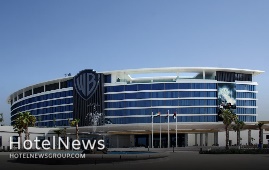
Miral, Abu Dhabi’s leading curator of magnetic experiences in collaboration with Warner Bros., home to one of the most well-known and successful collections of brands and characters in the world, announced today that The WB Abu Dhabi hotel on Yas Island, operated by Hilton under the Curio Collection brand, will open its doors to guests on 11 November 2021, inviting guests to see their favorite stories and characters brought to life through unique hospitality experiences that only the rich history and storied legacy of Warner Bros. could offer. Featuring one of the finest collections of Warner Bros. archives, guests at the world’s first Warner Bros. hotel will be treated to a journey of discovery through film and television, enjoying Warner Bros.’ rich history and library of timeless productions at every touchpoint from arrival to check-out. While dining in one of five of the restaurants on the property, you can listen as the piano from “Westworld” plays a familiar tune. Visitors can stroll through the lobby or admire 360-degree city and sea views alongside their favorite props and costumes from Warner Bros. films and TV shows. And kids and families can ring up one of their favorite Looney Tunes characters for a room service treat brought to them by the Wascally Wabbit, Bugs Bunny himself. Guests of The WB Abu Dhabi hotel begin their story as they pull up to the hotel and are greeted by digital screens that span the height of the building, playing original content created for the hotel. Before entering the hotel visitors won’t want to miss the iconic “Friends” fountain, guests will then enter the lobby and be drawn to the hotel’s uniquely designed lobby columns. As guests continue their journey, the storytelling experience is further enriched with guest room corridors displaying a curated gallery of artwork. Each of the hotel’s 257 rooms is furnished with touches that tie to the legacy of rich storytelling that makes Warner Bros. unique. The curated guestroom artwork will be inspired by three themes. The first theme, “From Script to Screen,” highlights standout moments from Warner Bros.’ movies and shows and documents the journey from the written page to the final shot. The second theme, “Artist Confidential,” celebrates a variety of talent in front of and behind the camera in some of Warner Bros.’ favorite productions. The third theme, “The Vault” features rarely seen images from Warner Bros.’ most memorable archives. Complementing the hotel’s unique design is an extensive and world class food and beverage program featuring five dining options catering to both adults and children. Craft Services, located in the lobby lounge, offers a relaxing coffee break after a busy day, while Sidekicks is the perfect place for socialising and interacting while enjoying a flavorful international menu. For those lounging by the pool in cabanas and sunbeds, The Matinee provides a casual dining option. Additionally, guests looking to indulge in an elegant dining experience, can visit The Director’s Club, or enjoy an experience at The Overlook, a fabulous lounge with a relaxing infinity pool and beautiful 360-degree city, theme park and sea views. The hotel is home to a host of leisure amenities for guests to enjoy, whether that’s lounging by the family pool area, working out in the fitness center, relaxing in the spa, exploring the artwork and props or shopping in the Warner Bros. store, the Prop Shop. For younger guests, the Kid’s Club will offer a vibrant and playful space designed to bring Warner Bros.’ characters to life. Some of WB’s world-renowned characters such as Bugs Bunny, Daffy Duck and others will participate in entertaining activities throughout the hotel providing guest memories that will last a lifetime. The hotel also caters for business meetings and events with a large ballroom and expansive meeting room facilities. The WB Abu Dhabi is located adjacent to the award-winning Warner Bros. World™ Abu Dhabi, the world’s largest indoor theme park which features six truly immersive lands, including DC’s Metropolis and Gotham City, Cartoon Junction, Bedrock, Dynamite Gulch and Warner Bros. Plaza, along with 29 state-of-the-art exhilarating rides, interactive family-friendly attractions and unique live entertainment. The hotel is also a walking distance from Yas Waterworld and a 5- minute drive to all other Yas Island unique attractions and experiences,
Create: Oct 16, 2021 Edit: Oct 16, 2021 International News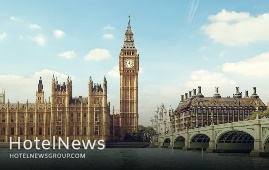
The World Travel & Tourism Council (WTTC) says the UK’s Travel & Tourism sector’s year on year recovery may only claw back a third, whilst international travel spending continues to plummet. Latest research from WTTC, which represents the global Travel & Tourism sector, shows the recovery has been severely delayed by the lack of spending from international visitors. WTTC blames strict travel restrictions, such as the destructive ‘traffic light’ system, for wreaking havoc on the sector. Now, despite its highly successful vaccine rollout, the UK is set to record further losses in inbound visitor spending than the previous year, a year in which international travel ground to an almost complete standstill. At the current rate of recovery, WTTC research shows the UK’s Travel & Tourism sector’s contribution to the nation’s economy could rise year on year by just under a third (32%) in 2021, broadly in line with the global average of 30.7%. However, research conducted by the global tourism body shows the increase has been primarily spurred on by the recent boom in domestic travel, with domestic spending growth set to experience a year on year rise of 49% in 2021. While this surge in domestic travel has provided a much-needed boost, it will not be enough to achieve a full economic recovery and save millions of jobs still under threat. The research goes on to show that international spending is predicted to plunge by nearly 50% on 2020 figures – one of the worst years on record for the Travel & Tourism sector – making it one of the worst performing countries in the world. While other countries, such as China and the U.S., are set to see a rise in international travel spending this year, the UK lags and continues to record significant losses. Severe travel restrictions, ever-changing policies, and barriers to travel to the UK, such as the current requirement for visitors to take an expensive day two PCR test after arriving in the country, have had their toll. Last year, the UK Travel & Tourism sector saw 307,000 job losses across the country and research shows that jobs in the sector are set to remain flat this year. Julia Simpson, WTTC President & CEO said: “WTTC research shows that while the global Travel & Tourism sector is beginning to recover, the UK continues to suffer big losses due to continuing travel restrictions that are tougher than the rest of Europe. Looking ahead to 2022, WTTC research provides grounds for optimism. With the right measures and a strong focus on international travel, the UK could see Travel & Tourism’s contribution to GDP rise by 53% in 2022, resulting in an additional £66 billion to its economy. International visitor spending could also see a significant increase reaching £29 billion – just 20% below 2019 levels. Meanwhile, employment growth could see a 14% boost year on year, equating to additional 580,000 jobs in 2022, resulting in over 4.7 million jobs, which is 445,000 above 2019 levels.
Create: Oct 16, 2021 Edit: Oct 16, 2021 International News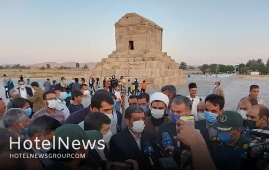
The UNESCO-registered Pasargadae is a symbol of human civilization in ancient Iran, tourism minister Ezzatollah Zarghami has announced.There is no doubt that Pasargadae belongs to Cyrus the Great, who is regarded as a legend in the world, whether or not he was buried here, it is important to respect him as an Iranian, the minister said on Thursday. He made the remarks during a visit to the majestic World Heritage site, which is situated in the southern Fars province. “Pasargadae stands out for its uniqueness on the international stage, if not as a special place, but as a symbol of civil and human development,” he noted. The tourism status of Pasargadae was among issues discussed with President Ebrahim Raisi during his current visit to Fars…., and funds have been considered for it, the minister added. He also noted that the majority of funds will be allocated to develop infrastructure and facilities, and making repairs for the public benefit, he said. There has already been an allocation of 200 billion rials ($4.7 million at the official exchange rate of 42,000 rials per dollar) to the historical site, he mentioned. Situated about 50 km north of Persepolis, Pasargadae embraces outstanding examples of the first phase of royal Achaemenid art and architecture and exceptional testimonies of Persian civilization. Cyrus was the founder of the Achaemenid Empire which at its greatest extent stretched from the Balkans to the Indus Valley, spanning 5.5 million square kilometers. The Persian king declared the world’s first charter of human rights, also known as the Cyrus Cylinder. Despite the minimal nature of the ruins, they make a good introduction to the wonders of Persepolis, some 60km to the south. Best visited en route from Yazd or Isfahan to Shiraz, most people fit them into an extended tour from Persepolis with stops at Naqsh-e Rostam and Naqsh-e Rajab.
Create: Oct 16, 2021 Edit: Oct 16, 2021 Regional News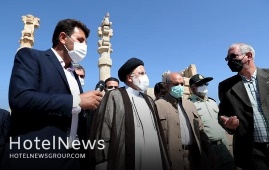
Iranian President Seyyed Ebrahim Raisi on Thursday said the UNESCO-registered Persepolis is an epitome of the great Persian art. Persepolis displays the great artistic achievements of Iranians from past millennia, which are still remarkable and admirable after so many centuries, the president said. He made the remarks during his visit to the prestigious site, which was once the ceremonial capital of the mighty Achaemenid Empire (c. 550 – 330 BC). [The ruins of] Persepolis is also conveying a message to oppressors warning them of the fate of those who are cruel to humanity, he added. The royal city of Persepolis ranks among the archaeological sites which have no equivalent, considering its unique architecture, urban planning, construction technology, and art. Persepolis, also known as Takht-e Jamshid, whose magnificent ruins rest at the foot of Kuh-e Rahmat (Mountain of Mercy) is situated 60 kilometers northeast of the city of Shiraz in Fars province. The city was burnt by Alexander the Great in 330 BC apparently as revenge to the Persians because it seems the Persian King Xerxes had burnt the Greek City of Athens around 150 years earlier. The city’s immense terrace was begun about 518 BC by Darius the Great, the Achaemenid Empire’s king. On this terrace, successive kings erected a series of architecturally stunning palatial buildings, among them the massive Apadana palace and the Throne Hall (“Hundred-Column Hall”). This 13-ha ensemble of majestic approaches, monumental stairways, throne rooms (Apadana), reception rooms, and dependencies is classified among the world’s greatest archaeological sites. Persepolis was the seat of the government of the Achaemenid Empire, though it was designed primarily to be a showplace and spectacular center for the receptions and festivals of the kings and their empire. The site is marked by a large terrace with its east side abutting the Kuh-e Rahmat (“Mount of Mercy”). The other three sides are formed by a retaining wall, varying in height with the slope of the ground from 13 to 41 feet (4 to 12 meters); on the west side, a magnificent double stair in two flights of 111 short stone steps leads to the top. On the terrace are the ruins of several colossal buildings, all constructed of a dark gray stone (often polished to a marble-like surface) from the adjacent mountain. According to Britannica, the stone was cut with the utmost precision into blocks of great size, which were laid without mortar; many of them are still in place. Especially striking are the huge columns, 13 of which still stand in the audience hall of Darius I (the Great; reigned 522–486 BC), known as the Apadana, the name given to a similar hall built by Darius at Susa. There are two more columns still standing in the entrance hall of the Gate of Xerxes, and a third has been assembled there from its broken pieces. In 1933 two sets of gold and silver plates recording in the three forms of cuneiform—ancient Persian, Elamite, and Babylonian—the boundaries of the Persian empire were discovered in the foundations of Darius’s hall of audience. Several inscriptions, cut in stone, of Darius I, Xerxes I, and Artaxerxes III indicate to which monarch the various buildings were attributed.
Create: Oct 16, 2021 Edit: Oct 16, 2021 Regional News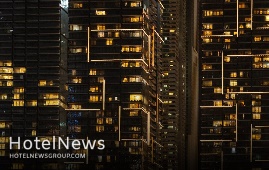
Recent weather disasters, social unrest and a heightened awareness of racial bias have prompted hoteliers to double down on their commitments to become better corporate citizens and do more to address environmental, social and governance (ESG) issues. These are moves toward a social good, sure, but also have ramifications on hotel company P&Ls. Marriott International, for one. It recently announced a commitment to reach net-zero emissions of greenhouse gases by 2050. The pledge follows the previous setting of goals by the massive global company to reduce single-use plastics, cut down on food waste by 50% and significantly amp up the diversity of suppliers, among other measures. InterContinental Hotels Group is another. Earlier this year it announced plans “to make a positive difference for our people, communities and planet over the next decade.” The company’s new commitments include a 15% “absolute reduction” of energy use and carbon emissions; a reduction of waste that will include the elimination of single-use items and a “prevent, donate, divert” plan for food waste; increased water conservation efforts; new programs to “improve the lives of 30 million people in our communities around the world” and, for employees, to “champion a diverse culture where everyone can thrive.” All of these measures benefit the public good and also have impact on a hotel’s ability to control expenses, particularly in regard to energy management. “Saving energy can—and will—impact profitability,” said Denise Naguib, VP of Sustainability and Supplier Diversity at Marriott. “For many properties, the second largest cost after labor is energy, and in some markets it actually supersedes labor, so this is a real cost that impacts the bottom line.” Energy By The Numbers Energy costs are mainly variable and there are ways to control this expense, which is of the moment now as the expense creeps back up. In U.S. hotels, the cost of electricity jumped to $4.31 in August on a per-available-room basis, compared to $3.35 in July 2020, according to HotStats data. Year-to-date August, hotels were paying $3.32 for energy, compared to $2.94 over the same period a year prior. Europe saw a similar rise, with August electricity at €6.26 compared to €8.26 in the same month last year, and €8.67 in the first eight months of this year compared to €8.26 in the same period a year ago. Small Steps, Big Rewards Operational changes large and small can help drive energy efficiency. “One of our hotels that had a high energy bill brought on an energy manager,” Naguib said. “That person found energy efficiencies and reduced the property’s energy bill by $1 million.” On a broader level, she added, properties need to empower engineers and others to find energy efficiencies, such as shutting a foyer light that’s kept on all day, deploying technology to regulate temperatures and electric usage throughout the space. Smart uses of food, such as saving the ends of vegetables for stews or making more scrambled eggs at the start of breakfast to avoid whipping up too many at the end of service, can have an impact. Energy purchasing decisions and the education of employees also can make a difference. That hands-on approach also can be used when working to make hoteliers’ purchasing choices more inclusive, Naguib said. “If any of our associates are working on RFPs or RFIs, we help them seek out diverse suppliers, such as women or minority-owned businesses. It adds more voices to the table for bidding opportunities.” Such shifts generate customer loyalty, IHG noted when it announced the company’s enhanced ESG policies.
Create: Oct 13, 2021 Edit: Oct 13, 2021 Hotel Management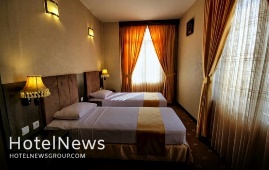
A total of 2007 beds is expected to be added to the hospitality sector of West Azarbaijan province, the provincial tourism chief has said. Currently, 41 tourism-related projects including hotels, apartment hotels, eco-lodges, and tourist complexes are underway across the northwestern province, Jalil Jabbari announced on Sunday. The province will increase its accommodation capacity by 974 rooms and 2007 beds through the opening of the mentioned ongoing projects, the official added. So far, the projects have progressed by 42 percent, he noted. Back in April, the official announced that tourism-related projects generated 1,767 job opportunities across the province during the past Iranian calendar year 1399 (ends March 21). “The largest number of jobs is related to the issuance of licenses for handicraft producers, which has led to the employment of 549 persons,” he noted. Iran considers reopening borders to foreign vacationers as its new tourism minister has said the government will soon scrap visa restrictions. Though international tourism has revealed signs of a rebound as some destinations eased travel restrictions over the past couple of months, the lack of international coordination and slow vaccination rates in several countries and regions suggest it may need a longer time to bounce back. On the one hand, according to the latest edition of the UNWTO World Tourism Barometer, an estimated 54 million tourists crossed international borders in July 2021, down 67% from the same month in 2019, but the strongest results since April 2020. This compares to an estimated 34 million international arrivals recorded in July 2020, though well below the 164 million figure recorded in 2019. On the other hand, another research conducted by Oxford Economics on behalf of the World Travel and Tourism Council (WTTC) reveals that countries’ GDP is expected to increase only by less than one-third, as tourism is recovering even slower than expected. The research was based on the current vaccination rates globally, consumer confidence, and less stringent entry and travel restrictions in the world. However, prospects for September-December 2021 remain mixed, according to the latest UNWTO Panel of Experts survey, with 53% of respondents believing the period will be worse than expected. Only 31% of experts expect the point to better results towards the end of the year. The survey also shows that most tourism professionals continue to expect a rebound driven by unleashed pent-up demand for international travel in 2022, mostly during the second and third quarters. West Azarbaijan embraces a variety of lush natural sceneries, cultural heritage sites, and museums including the UNESCO sites of Takht-e Soleyman and Qareh Klise (St. Thaddeus Monastery), Teppe Hasanlu, and the ruined Bastam Citadel. The region was home to several ancient civilizations. According to Britannica, it was conquered by Alexander the Great in the 4th century BC and was named Atropatene after one of Alexander’s generals, Atropates, who established a small kingdom there. Ultimately, the area returned to the Persian (Iranian) rule under the Sasanians in the 3rd century CE.
Create: Oct 13, 2021 Edit: Oct 13, 2021 Regional News
